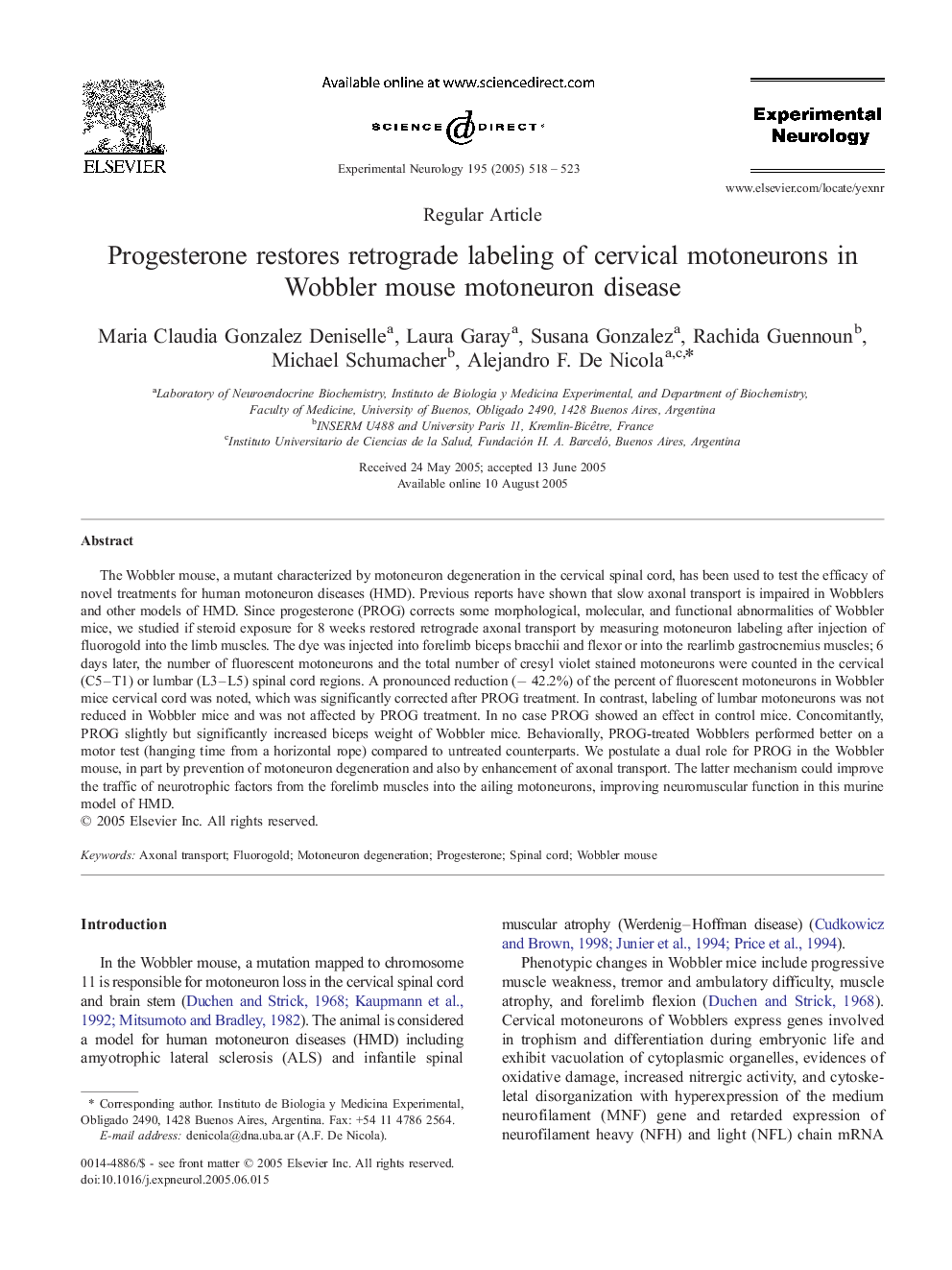| Article ID | Journal | Published Year | Pages | File Type |
|---|---|---|---|---|
| 9191951 | Experimental Neurology | 2005 | 6 Pages |
Abstract
The Wobbler mouse, a mutant characterized by motoneuron degeneration in the cervical spinal cord, has been used to test the efficacy of novel treatments for human motoneuron diseases (HMD). Previous reports have shown that slow axonal transport is impaired in Wobblers and other models of HMD. Since progesterone (PROG) corrects some morphological, molecular, and functional abnormalities of Wobbler mice, we studied if steroid exposure for 8 weeks restored retrograde axonal transport by measuring motoneuron labeling after injection of fluorogold into the limb muscles. The dye was injected into forelimb biceps bracchii and flexor or into the rearlimb gastrocnemius muscles; 6 days later, the number of fluorescent motoneurons and the total number of cresyl violet stained motoneurons were counted in the cervical (C5-T1) or lumbar (L3-L5) spinal cord regions. A pronounced reduction (â 42.2%) of the percent of fluorescent motoneurons in Wobbler mice cervical cord was noted, which was significantly corrected after PROG treatment. In contrast, labeling of lumbar motoneurons was not reduced in Wobbler mice and was not affected by PROG treatment. In no case PROG showed an effect in control mice. Concomitantly, PROG slightly but significantly increased biceps weight of Wobbler mice. Behaviorally, PROG-treated Wobblers performed better on a motor test (hanging time from a horizontal rope) compared to untreated counterparts. We postulate a dual role for PROG in the Wobbler mouse, in part by prevention of motoneuron degeneration and also by enhancement of axonal transport. The latter mechanism could improve the traffic of neurotrophic factors from the forelimb muscles into the ailing motoneurons, improving neuromuscular function in this murine model of HMD.
Related Topics
Life Sciences
Neuroscience
Neurology
Authors
Maria Claudia Gonzalez Deniselle, Laura Garay, Susana Gonzalez, Rachida Guennoun, Michael Schumacher, Alejandro F. De Nicola,
